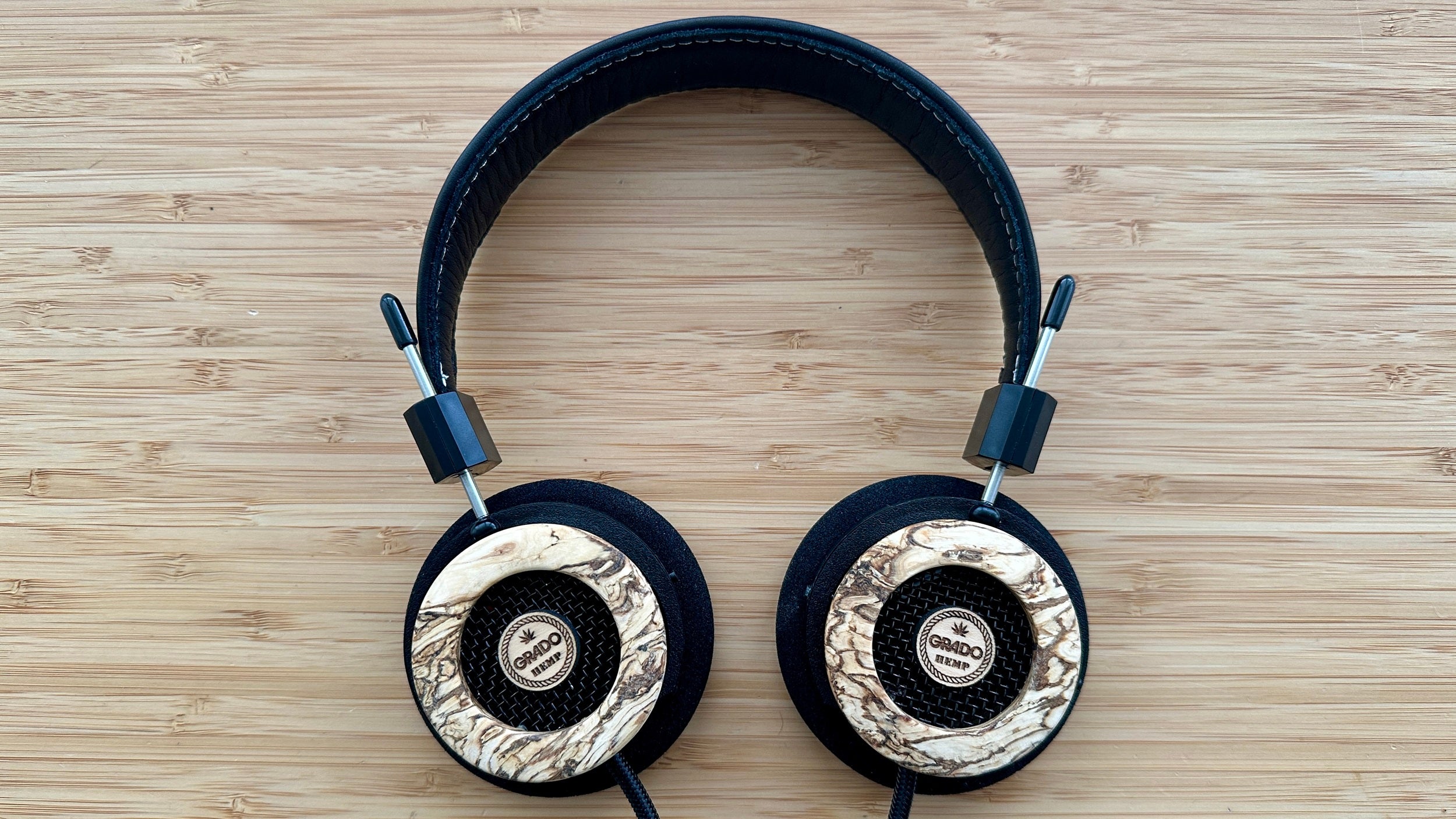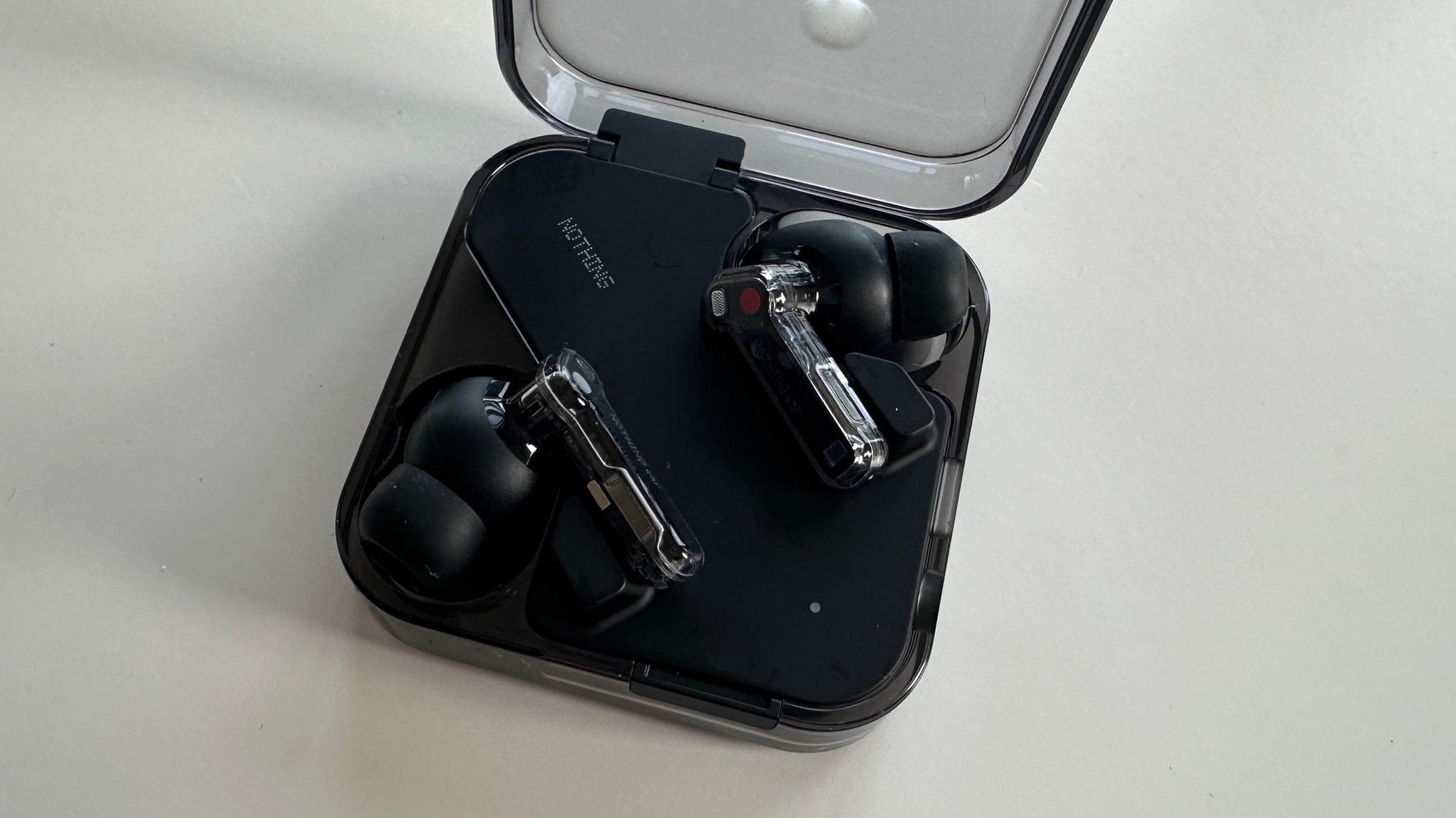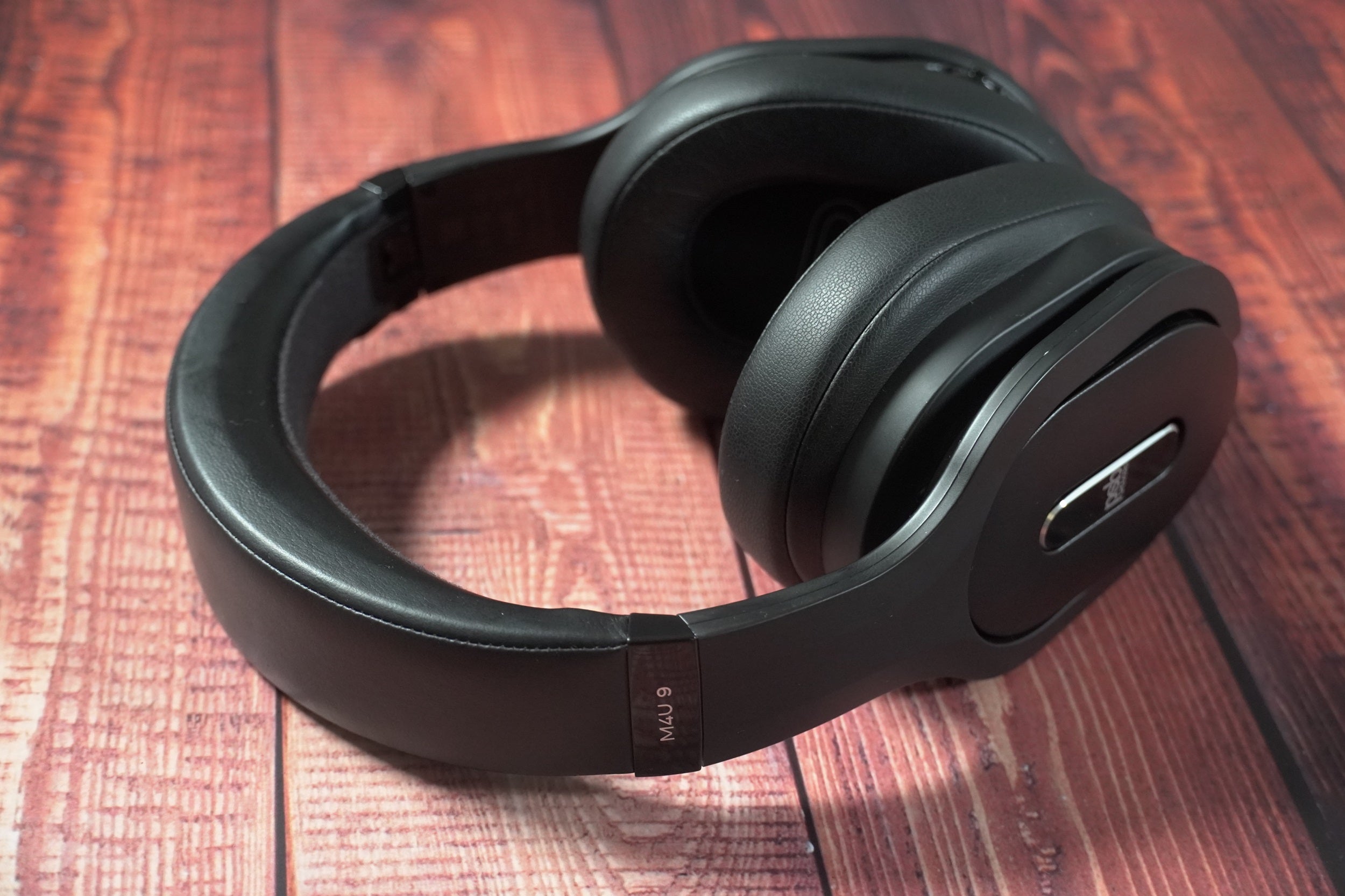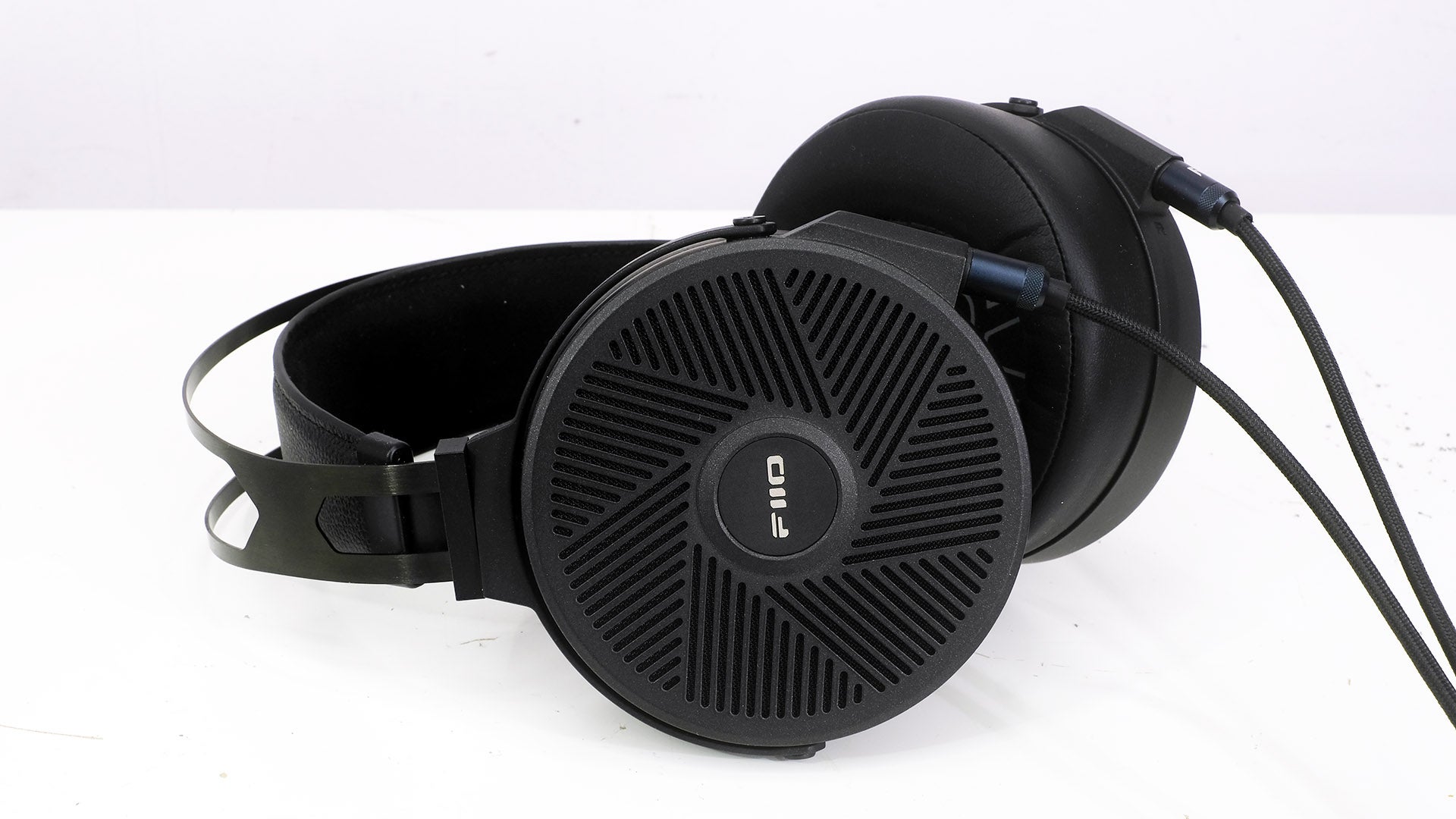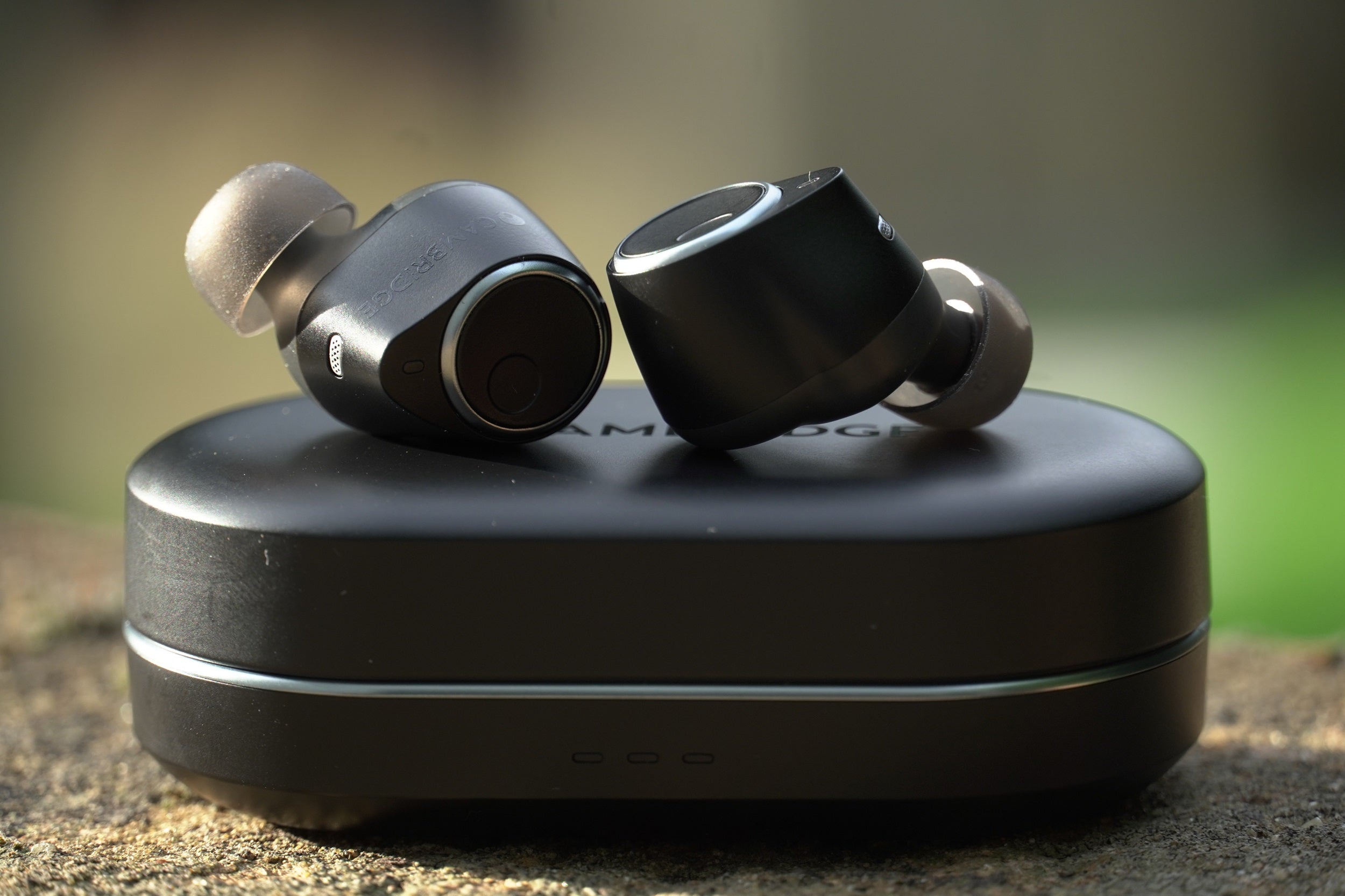Sendy Apollo Review
Great looking over-ears with a warm sound
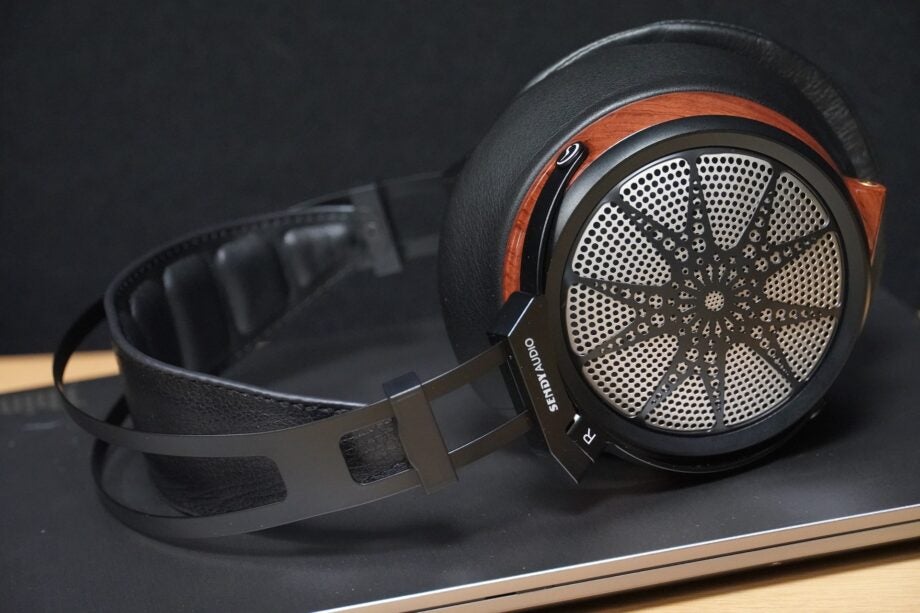
Verdict
On their own, the Apollo offer a pleasantly engaging and warm sound. Combined with a DAC/headphone amplifier, these open-backed cans fulfil more of their potential.
Pros
- Warm, pleasant sound
- Great aesthetics
- Very comfortable
Cons
- Amplification gets more performance from them
Availability
- UKRRP: £459
- USARRP: $499
- EuropeRRP: €549
- CanadaRRP: CA$709
- AustraliaRRP: AU$809
Key Features
- Planar magnetic driversFeatures 68mm transducers to produce sound
- Detachable earpadsEarpads can be detached and replaced
Introduction
Sendy Audio is the sister brand of Chinese hi-fi outfit Sivga, and they share the ambition of producing high-quality cans that offer an audiophile listening experience.
The Apollo open-backed cans are the first headphones we’ve tested from Sendy, and the expectation is that they’ll follow in the footsteps of the P-II and Robin SV021 models, delivering a warm presentation and aesthetically pleasing looks.
They’re also the most expensive model we’ve looked at from either Sivga and Sendy, which raises those expectations further and poses the question as to whether they’ll be able to meet them. Let’s find out.
Design
- Terrific appearance and construction
- Excellent comfort
- Use goat’s leather in headband
The Apollo are flat-out gorgeous in appearance. Handcrafted at the Sendy factory, the use of rosewood emphasises that natural handmade feel; the glossy finish is a stunner, with no imperfections or nicks on the review sample. The Apollo look great and feel great to touch, and that’s part of the reason that people enjoy hi-fi so.
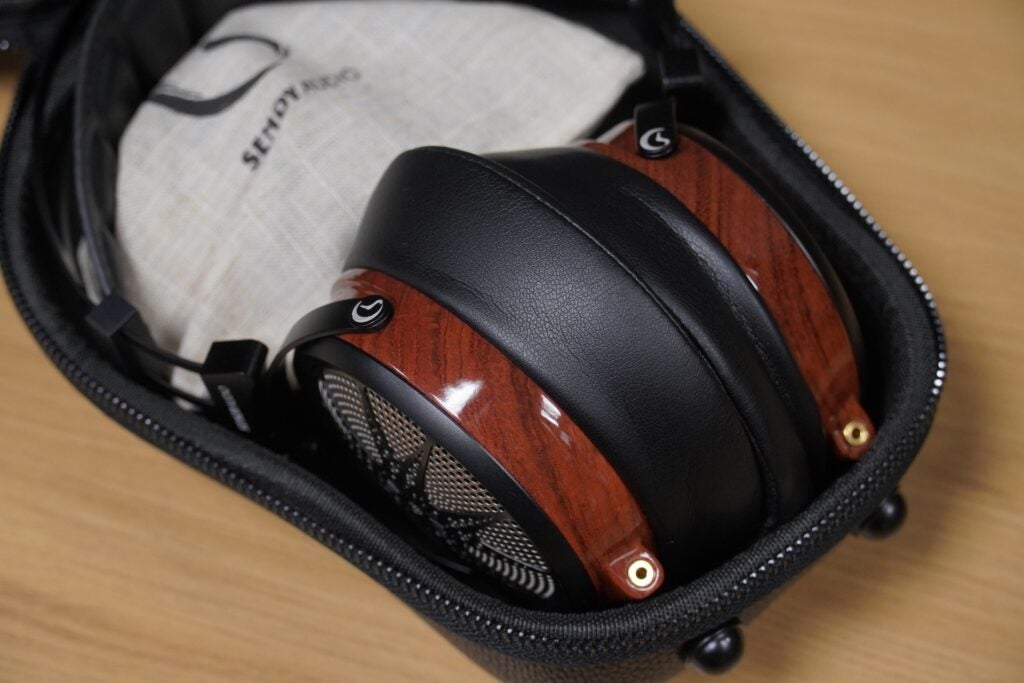
They’re also lovely to wear. The size of the earcups and padding makes them best suited for bigger heads – smaller ones may feel swamped by their size. The hinges allow some scope for achieving the best fit, but I don’t think you’ll have much trouble there. The earcups simply swaddle your ears in high-protein padding.
At 385g, they weigh less than the P-II, and the earpad cushions that softly press against the head only become a little warm during use. The cans do feel loose at first, but the headband can be adjusted up or down to fit. Speaking of which…
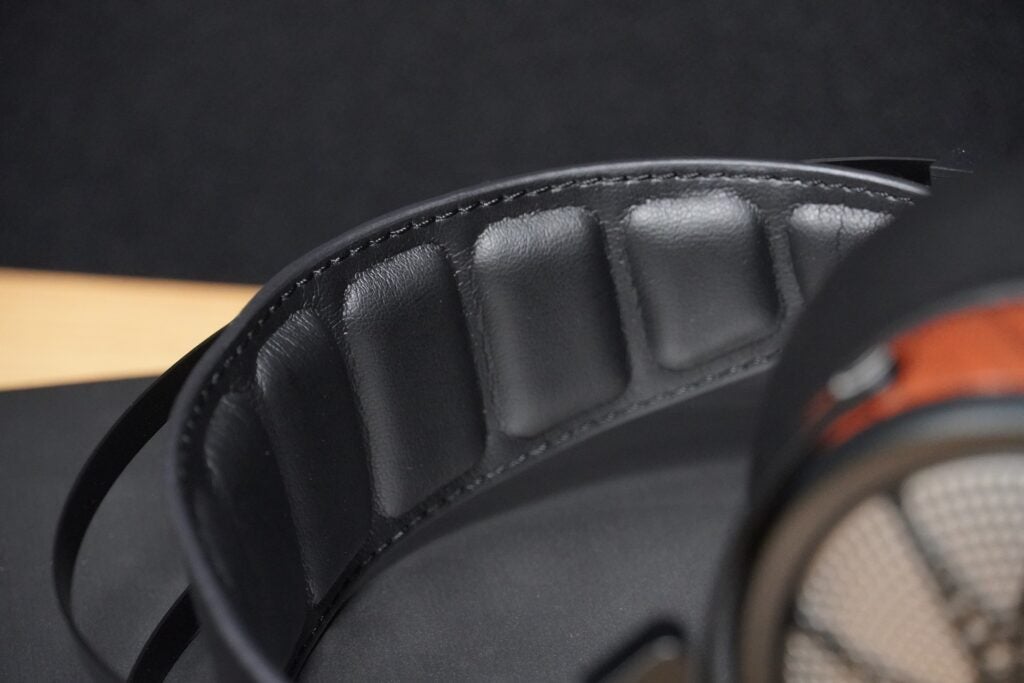
The headband is made from soft and pliable goat’s leather, with any pressure on the head barely noticeable – excellent for extended use; although vegans should probably give these headphones a swerve. Left and right earcups are denoted not just by the markings on the hinges but inside the earpads, too.
The open-back mesh housing features a striking sunlight design, a reference to Greek God of the Sun (and music), Apollo. The dotted membrane has both aesthetic and acoustic purposes, the arrangement of each hole said to influence the tuning of the headphone’s sound. It’s also worth remembering that as an open design, the headphones do leak sound.
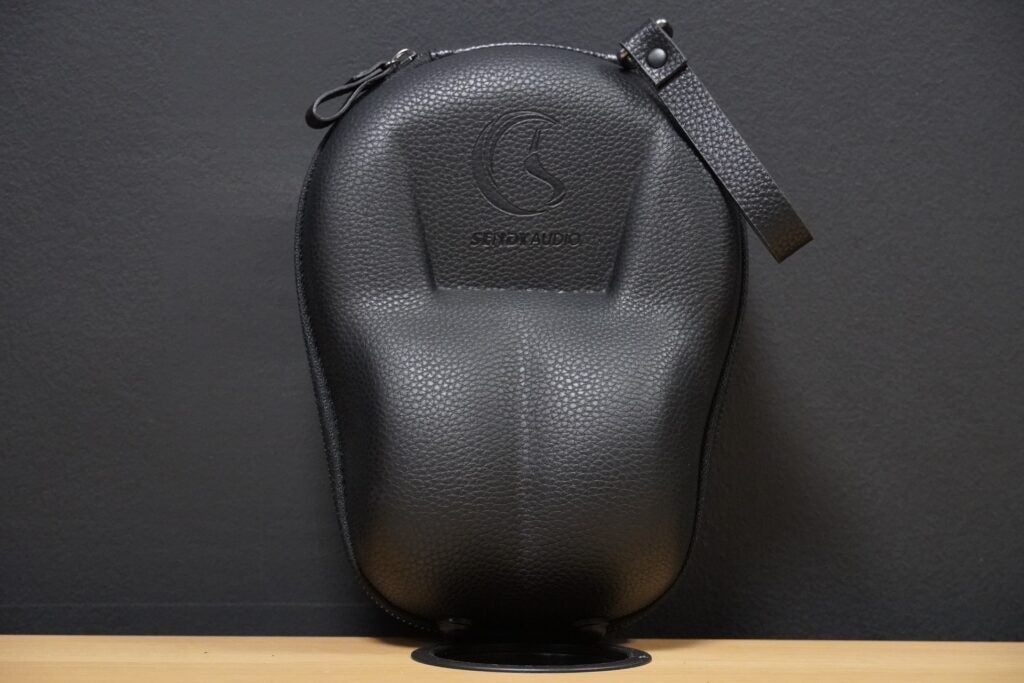
Accompanying the headphones is a pear-shaped leather case for storage. It isn’t particularly portable – placed in a rucksack, it’s like a bag within a bag – but it certainly isn’t the biggest carry case I’ve encountered (that would be the one for the Monolith M1070). Inside is a hemp case for carrying the cable and connectors; a 4.4mm balanced effort with 3.5mm adapter. The cable connection on the Apollo is slanted at an angle to avoid draping over the shoulder when in use.
One other aspect to note is that the earpads are detachable and can be replaced should they become damaged.
Features
- Low impendence
- Wide frequency range
- Planar magnetic drivers
The Sendy Apollo don’t come with features in abundance, as you’d find with a wireless equivalent. Rattling through them, impendence is rated at 16-ohms, which is far less than the Sivga P-II or the Grado SR325x on-ears. A figure that low makes them easy to drive but also suggests that amplification is required since without it the volume the headphones will output at is low (unless you nudge the volume up on your source device).
Frequency response is 20Hz to 40kHz, which covers the Hi-Res Audio standard. If you have a) the necessary content and b) a source capable of playing that content, the Apollo should be able to do the rest. Sensitivity is 95dB.
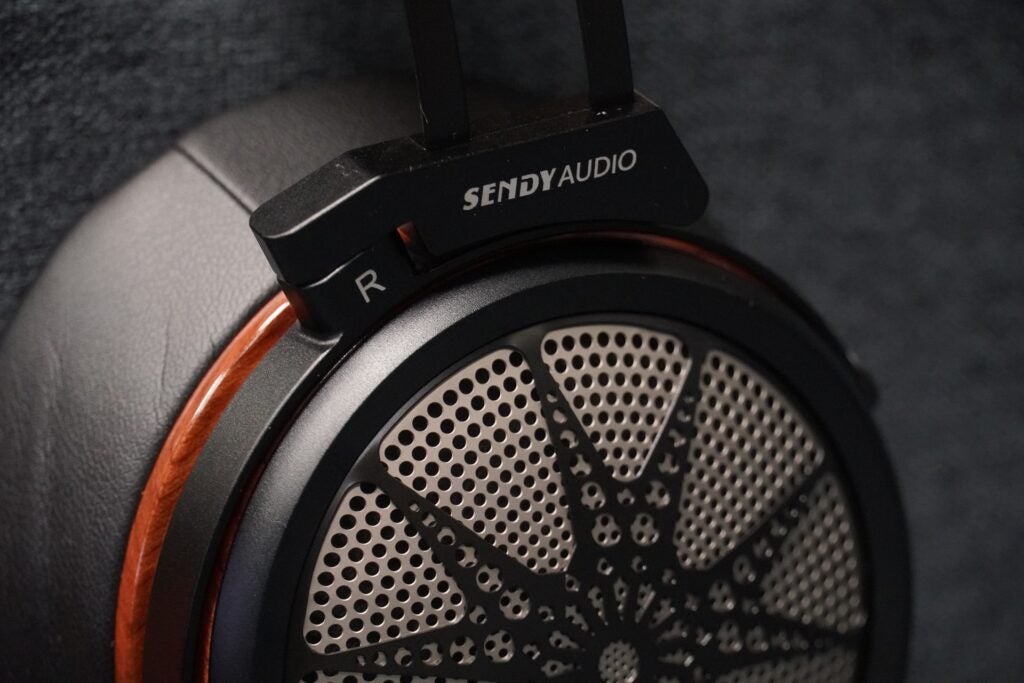
The driver is planar magnetic. In ye olde days when planar technology was first introduced, it was big and heavy, resulting in headphones that were also big and heavy. The technology has advanced to the point where it has become both smaller and lighter, used in wired headphones with ambitions of being as portable as their wireless cousins.
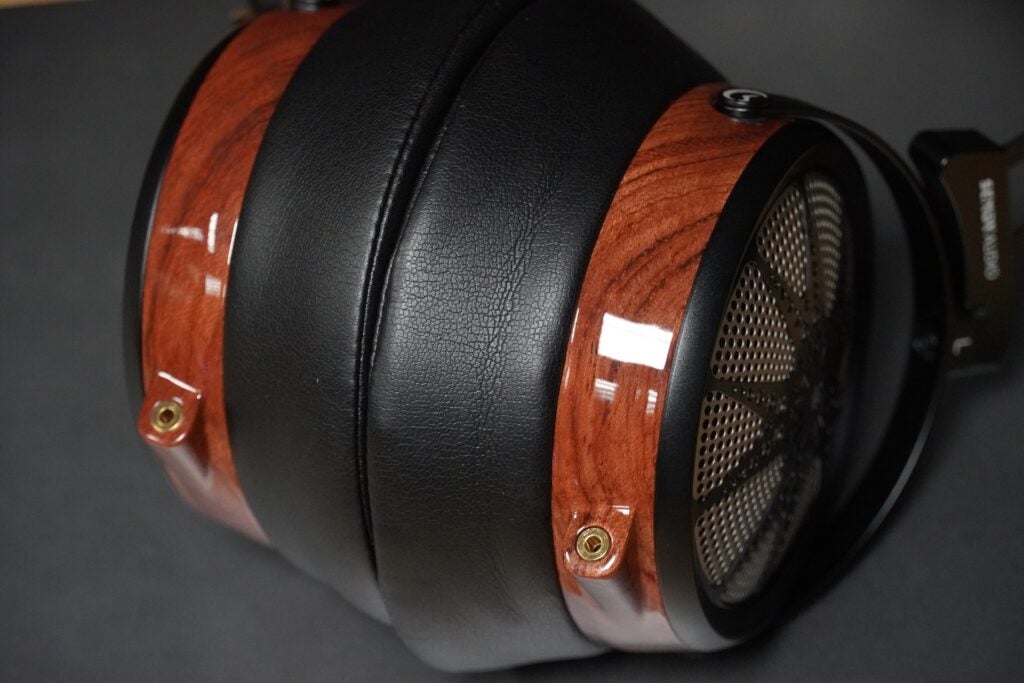
The Apollo sport a 68mm large diaphragm transducer for its planar driver, and Sendy refers to the use of Quad Former technology in its description of the design. It uses two magnets next to a double-coil arrangement either side of the diaphragm in the middle. Sendy claims this offers “excellent” electroacoustic energy efficiency, extremely low distortion, and ups the Apollo’s ability to reproduce music.
The detachable 6N OCC braided cable is 2m in length (another sign these wouldn’t be best for portable use), and Sendy says the cable offers no signal loss in transmission. It also doesn’t become too tangled – and when it does, it’s easy to unpick, which adds a few points in the convenience stakes.
Sound Quality
- Warm soundstage with decent width
- Smooth vocal performance
- Not the most dynamic of performers
Having put the Apollo through the recommended 100 hours of burn-in before listening, the low impendence has been a slight cause for concern over the course of using them. I’ve plugged them into portable music players and systems and have always had to push up the volume significantly. If you’re interested in the Apollo, it’s a certainty that you’ll need amplification such as a DAC to get the best from them.
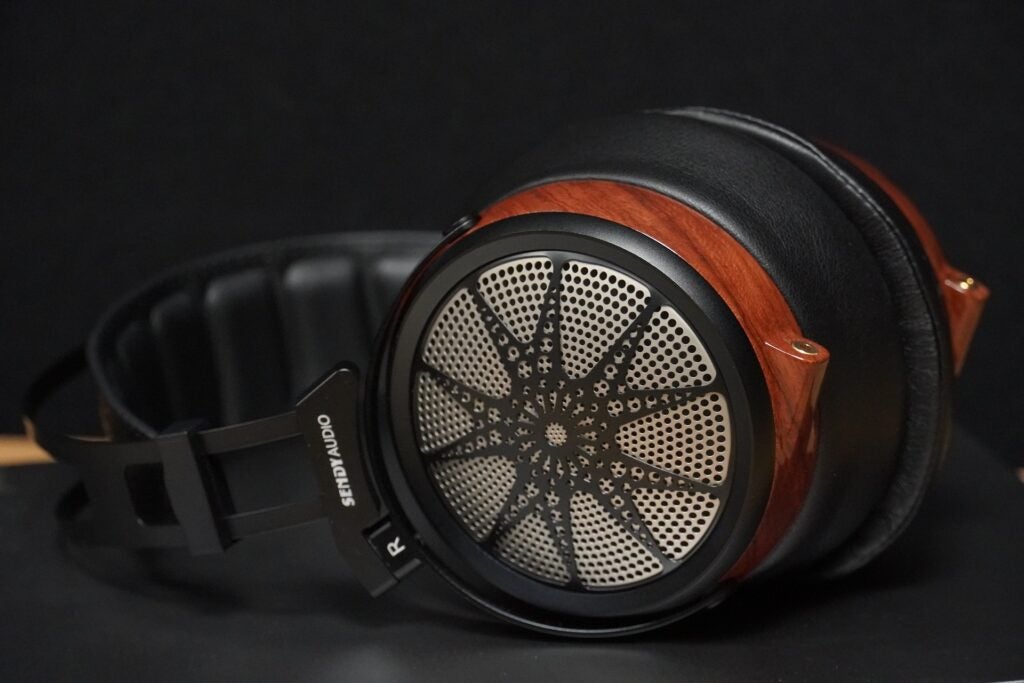
In terms of expectations, the Apollo do meet what Sendy has asked of them. Listening to them reveals a soft-sounding and warm presentation that’s pleasantly lush at times. They are, however, easy-going headphones to a fault.
Plugged into a source, the first thing I had to do was raise the volume – they can sound shy and reticent off the bat. Once a level has been found, the Apollo give up a degree of definition, punchiness and sharpness to a pair like Grado’s SR325x on-ears.
This isn’t a like-for-like comparison, of course – open-backed over-ears vs open-backed on-ears – but listening to the same tracks, the Grados offer more dynamism, greater expression and definition to instruments. On the other hand, the Sendy heaphones’ warmth make bass sound soft, and they’re not as able to pick out instruments with as much clarity and give them their own distinctly etched space within a soundstage.
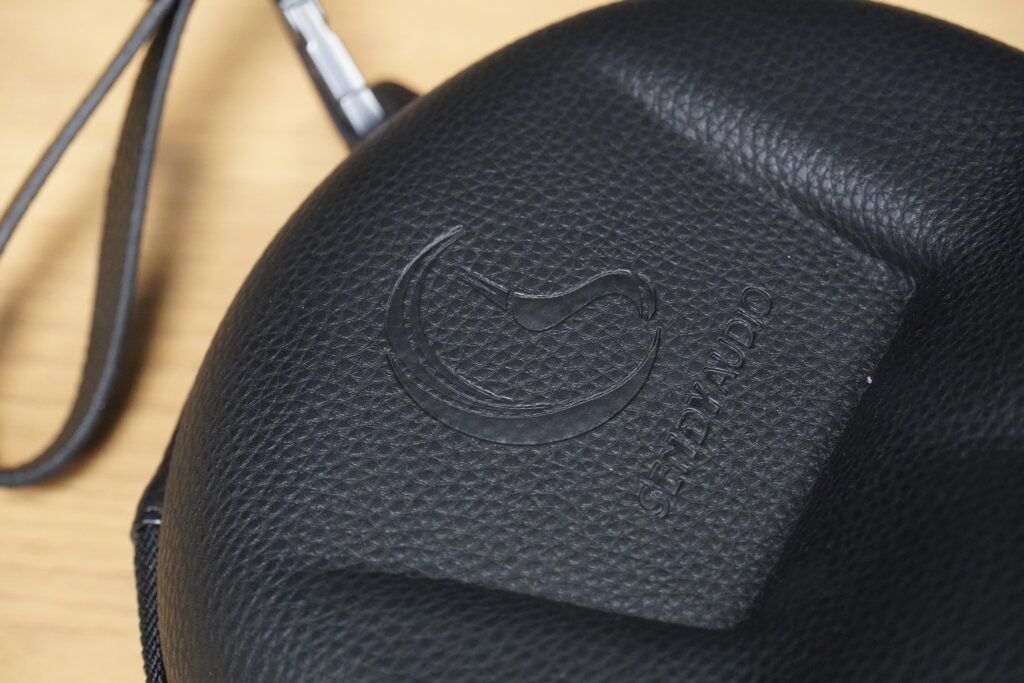
However, give the Apollo a high-quality track and its attributes come to the fore rather well. A 24-bit/192kHz file of Coldplay’s God Put A Smile Upon Your Face on an Astell & Kern SR25, and the Apollo deliver Chris Martin’s voice with an inviting softness and warmth, capturing the changes in the pitch of his voice fine enough and extending the soundstage with width. However, I noticed that the repeated drumbeat wasn’t delivered with much of a kick, and although the soundstage is wide, the sense of depth to music isn’t quite felt.
Despite this, the Apollo are a consistently pleasant listen. Fleetwood Mac’s The Chain (24-bit/96kHz) displays a decent amount of vigour and energy in the latter half of the track; there’s solid definition to Lindsey Buckingham’s Dobro guitar, as well as nice, vivid texture to instruments and reasonable amount of insight that’s married to a respectable sense of timing – although, as mentioned, more definition and sharpness would help.
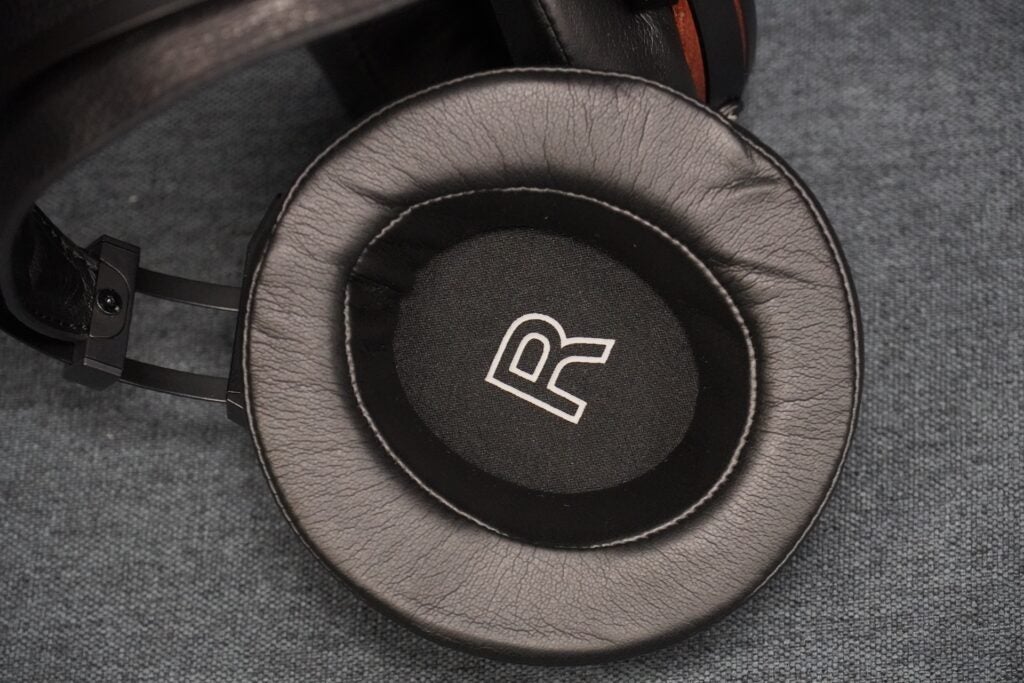
Used with a laptop and an EarMen Eagle DAC, there’s more to be gained in terms of clarity, detail and definition. The Apollo + Eagle combination renders instruments more distinctly, expanding the soundstage even further, giving bass a firmer foundation as well as a punch in some more energy and excitement.
On their own, there’s decent enough brightness reaped from Takuya Kuroda’s Fade (16-bit/44.1khz), but more is elicited with the Eagle DAC for a richer, expressive and dynamic performance. Add a DAC to these headphones and you’ve got a winning combination; without one, the Apollo remain a solid and pleasant listen.
Latest deals
Should you buy it?
For the warm presentation and excellent looks Aesthetically, the look of the Sendy Apollo is great, they’re comfortable to wear, and if you enjoy a warm hug of a sound then you’ll likely find these appealing.
You’ll need a DAC to get the best out of them The low impedance makes them easy to drive with amplification and adding a DAC to your setup will reap better performance.
Final Thoughts
The Sendy Apollo produce a soft, lush and warm presentation, but it’s an approach that leaves them short in a few areas – namely definition and dynamism. For budding audiophiles, the Apollo may be a pair that will make you aware of the role headphone amplification and high-quality sources play in a hi-fi setup.
On their own, the Apollo are a pleasurable listening experience, although I’m always struck by the feeling I could be getting more from the music to which I’m listening. Pair these headphones with a DAC, and it helps the Apollo realise more of their potential.
How we test
We test every headphones we review thoroughly over an extended period of time. We use industry standard tests to compare features properly. We’ll always tell you what we find. We never, ever, accept money to review a product.
Find out more about how we test in our ethics policy.
Tested over several weeks
Tested with a range music files and streaming services
FAQs
The Apollo headphones are supplied with a 4.4mm balanced cable with a 3.5mm
Full specs
Jargon buster
Midrange
Midrange refers to the part of the frequency range that sits between the bass and treble. The midrange is the area that handles vocals and most of the instruments heard in a track. It can also be in reference to midrange loudspeaker drivers that replicate this area of the frequency range.Hi-Res Audio
Hi-Res audio is referred to as a standard as well as a marketing term that describes digital audio files of better-than-CD quality (16-bit/44.1kHz).


